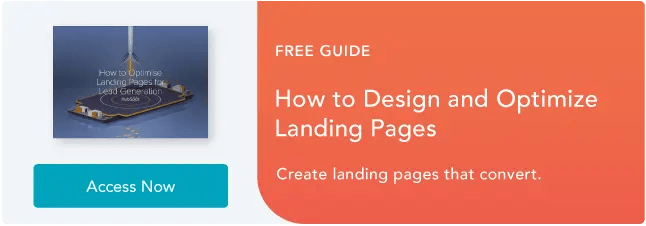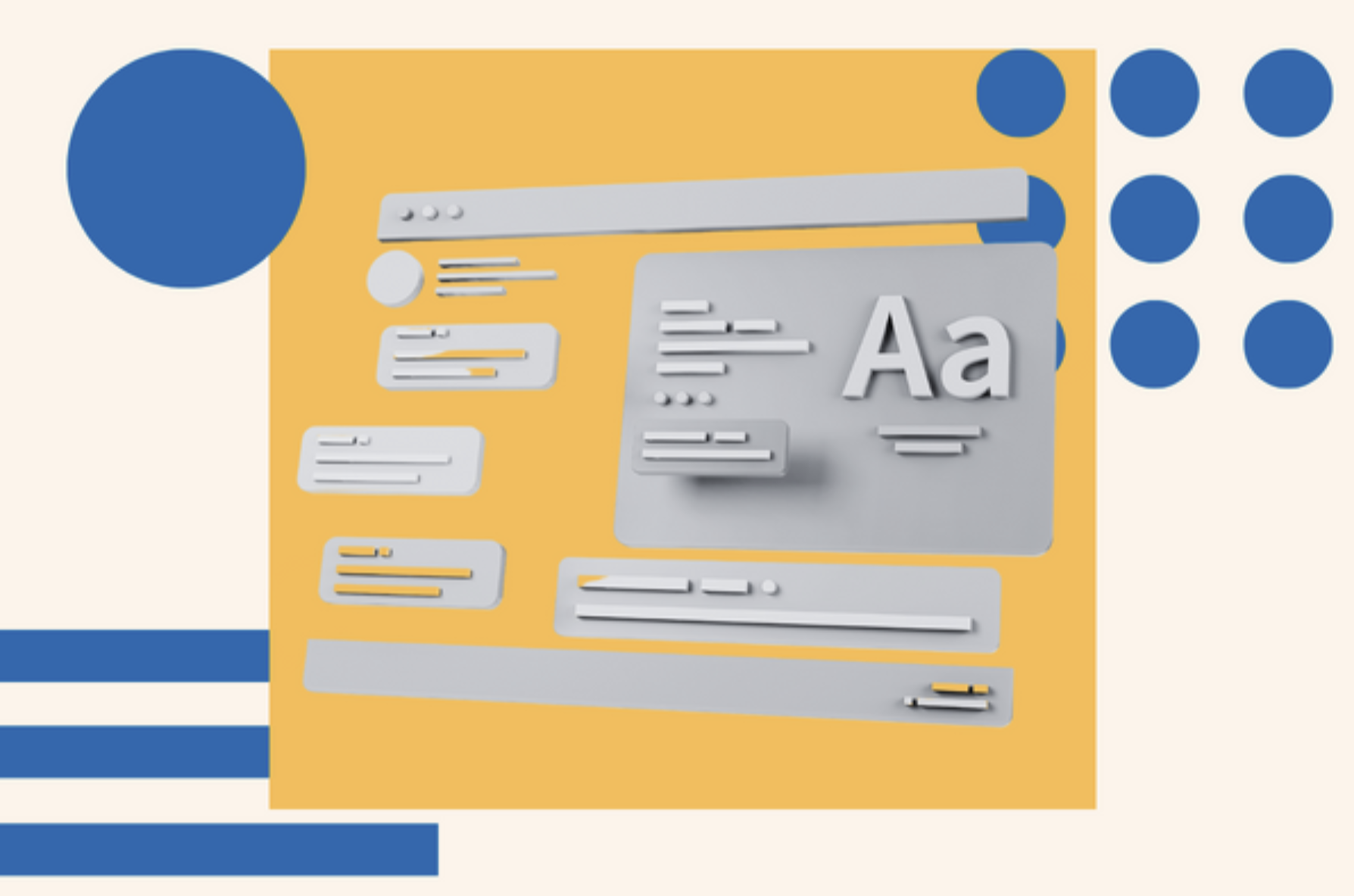It probably goes without saying, but we're huge fans of optimization here at HubSpot. But we also know that optimization can be exhausting. Most marketers have a lot on their plates -- it’s enough to try and design a marketing strategy, write an ebook, and hit your monthly lead gen goal without the worry of testing and optimizing everything.

So rather than reaching for a gallon of Ben and Jerry’s and hiding until all this bad noise about A/B testing stops, think about how much more efficient optimization can make you in the long run! Because I am an optimization nerd, I think about how to optimize everything -- from how I bake cookies to which road I take to work. If you aren’t similarly obsessive, however, this blog post is for you. It'll teach you how to focus your optimization efforts on the elements of your inbound strategy that will really move the needle. So here are six things that you should regularly be optimizing to continuously make a noticeable difference on your bottom line.
1) Your Landing Pages
A landing page is a web page that allows you to capture a visitor’s information through a lead-capture form. Landing pages are also the point on your conversion path where you collect the information you need to qualify that visitor as a lead in your marketing database. Through your landing pages, you're also gathering valuable information about your leads so you can continue to market to them more effectively with things like personalized email marketing and dynamic website content that appeals to their specific interests and needs. This enables you to nurture and move your leads through the funnel to a point of sales readiness.
Why optimize your landing pages?
Your landing pages are such a critical part of an effective inbound marketing strategy, and even small conversion improvements can make a significant impact on your bottom line. In addition to the new prospects and leads, many repeat visitors will come across your landing page. Just because they're already in your database doesn't mean you don't want to incite a conversion -- remember, it's an opportunity to learn more about them so you can better refine subsequent messages to them. Optimizing your landing pages will ensure these folks continuously see the information they expect, and continue to engage with your content in a way that moves them further and further down the sales funnel.
How to Start Optimizing Your Landing Pages
Here's a checklist from our new ebook, How to Optimize Landing Pages for Conversions, to help you begin reviewing your landing pages and uncover opportunities for better optimization.
- Does it pass the blink test? Can someone look at your landing page and after three to five seconds know what the offer is, why you're offering it, and why it’s valuable?
- Do you have an attention grabbing headline?
- Do you have a relevant image?
- Is your copy clear and compelling?
- Have you minimized the distractions on the page -- like an external navigation, or an additional call-to-action -- that would otherwise impact conversions?
- Do you have an optimized form?
- Have you included social sharing options?
Once you identify the places your landing pages are weak, plan an A/B test to try and fill in these holes. According to our research, A/B testing of landing pages can generate up to 30-40% more leads for B2B sites, and 20-25% more leads for ecommerce sites!
Here are some tips to begin your landing page optimization:
- Look at your individual page elements. Pay special attention to each element of your landing page -- the form, the headline, the image, the copy, the button. There is a wealth of information on how to optimize your landing page layout, and it's often focused around these individual elements. In our new landing page optimization ebook, we include information on optimizing specific page elements. Make sure to pay close attention to the big three, which are major contributors to overall conversion success: layout, headlines, and forms.
- Increase raw number of landing pages. You want to optimize both the performance of your landing pages, and the number of pages you have, to improve your lead generation. Our recent study of over 7,000 customers unveiled that companies see a 55% increase in leads when increasing their number of landing pages from 10 to 15. Just five more! Experiment with adding new pages to target specific keywords and audiences, and watch your leads dramatically increase, too.
2) Your Website's Conversion Path
The conversion path is the step-by-step series of clicks that a visitor goes through on your website, from their first interaction with you to whatever goal you’re trying to accomplish on your site. Called a conversion -- hence the term conversion path -- this goal is usually something like a form completion or a transaction.
Here's one example of a conversion path, though yours could branch in a variety of ways depending on your business model.
Facebook update --> Landing page --> Shopping cart sequence --> Payment funnel --> Pre-bill order confirmation page --> Billing page --> Confirmation page
Why optimize your conversion path?
Just as it’s vital to make sure you're maximizing the output of each individual page on your website, it’s incredibly important to understand how all of your pages work together. Which pages of your website make you the most money? Which ones generate the most leads? Which ones are preventing your prospects from advancing through your sales funnel? On a relay team, you can put together the greatest four runners in the world. But if they drop the baton at every handoff, you'll never finish a race. Similarly, if a reader moves from one page to the next and gets confused, the only button they are likely to click is “back”.
The website is the hub your online presence. All of your various marketing channels, including PPC, SEO, and social media will all ultimately point back to the website. This is where you control the conversation about what makes your products and services unique. That means that optimizing both your landing pages and your overall conversion path is crucial to the success of every other part of your marketing. It’s no good to spend thousands securing PPC “clicks” if your website loses 30% of its traffic as soon as someone clicks on the ad because your landing page is confusing and misaligned.
Instead, each web page should logically address a specific concern, and lead your audience down a logical progression to your ultimate goal.
How to Start Optimizing Your Conversion Path
First, map out your site’s possible conversion paths. Then, look at the conversion metrics as visitors progress through these pages. Are there any pages that are dramatically over or under-performing? What can you learn from these pages? Once you have your conversion path laid out, think about other ways to optimize it. For example:
- Look at your site analytics or, if you're using HubSpot, your Sources report, to discover which content is attracting the most qualified leads and driving the most conversions.
- Experiment with new calls-to-action to test the effectiveness of different text, colors, images, and copy on your conversions.
Test out the ways your funnel responds to alternate conversion paths and see if there are any opportunities to improve these processes.
3) Your Value Proposition
Your value proposition speaks to the heart of your competitive advantange, and should power the messaging you're putting out on every marketing channel. It should clearly state why someone would make a purchase from your company, among the many others out there that appear to do similar things.
Why optimize your value proposition?
Online, the value proposition is generally the first sentence that your visitor will scan -- on your website, social profiles, and other collateral -- as well as what they glean when reading anything else you push out. It's important that with just one sentence, you can address why your company, products, and/or service are great. It makes sense to test this sentence to make sure you're conveying the right message.
In MarketingSherpa's 2012 Website Optimization Report, they found that companies who tested their value propositions were 15% more likely to produce ROI for their optimization programs. That’s a 15% bump in performance by changing a single sentence, which is a pretty compelling argument for value prop optimization.
How to Start Optimizing Your Value Proposition
Begin with defining your value proposition and circulating it internally. Does everyone in your company agree with your one-sentence differentiator? Have you been specific in what sets you apart? Now, look at your competitors. How do your claims measure up against your competition?
Once you have internal buy-in, take it to the streets. Run an A/B test experimenting with different versions of your value proposition explanation on a high-traffic landing page. Are there any semantic changes that will improve your overall conversion rates? When you ask people that know nothing about your company, could they explain what value your company gives? Continue tweaking your phrasing and word choice until you've reached a value proposition that's clear and compelling.
4) Your Marketing Content
Your marketing content is, simply, the words that populate your website and marketing campaigns. But your marketing content encompasses much more than just the copy -- it's the copy, the layout, the topic selection, the publishing strategy, etc. All of this tees you up to get found by your target audience, educate readers on your products and services, and move them through the funnel.
Why optimize your marketing content?
Great inbound marketing campaigns begin with great content -- you'll use this content to attract and convert customers, pulling people into your website, blog, and other online spheres of influence. The language you use on your site and in your marketing offers is the thread that ties all your various marketing channels and tactics together.
Most marketers also agree that developing content is pivotal for their 2013 marketing strategies. A recent Econsultancy study on 2013 marketing budgets, for instance, found that 70% of brand marketers will allocate budget to content creation. It's no secret: content is important stuff, and it's up to us to continue optimizing our marketing copy so we can keep getting more and more out of that all-important marketing investment.
How to Start Optimizing Your Marketing Copy
When thinking about optimizing your marketing copy, think beyond simply the words on the page. For online content optimization, you need to look at not only your copy, but your keyword strategy, topic selection, internal linking, SEO, etc. In other words, you need to understand not only what you're writing, but also why you're writing it, how to write it, where to add links and sharing buttons, and where to publish and promote it.
One of the best places to begin your content optimization is looking at your keywords. Dive into your site analytics and review what keywords your readers types in to arrive at your site. Then use this keyword research as a basis to create new content around the topics that are interesting to your audience, and positioned in the way they actually think. You might find using different terminology changes how your audiences finds you and interacts with your content. For example, at HubSpot, we were able to A/B test specific content about our blogging trial tool; adjusting our copy to address specific pain points increased our conversion rate among our advance-stage qualified leads from 8% to 20%.
While you’re honing your content topics and word choice, make sure to also pay attention to your content layout. Similar to landing page design, there are a variety of structural factors that impact whether or not someone actually reads your copy. The most critical facet of your copy format is probably your headline. According to Copyblogger, 80% of people will read your headline, but only 20% will read the content in the body. That's one place you could begin doing a little optimization work then, right?
For more information on optimizing your content, check out A Practical Guide to Killer Marketing Content.
5) Your Homepage
Your company homepage is an online ambassador for your brand. In contrast to a single-purpose landing page, your company homepage could serve a number of different purposes, including introducing your value proposition, establishing your brand, and even recruiting new hires.
Why optimize your homepage?
The company homepage is generally a company’s most frequently-viewed digital asset. Optimizers need to pay special attention to both the design of and content on the company homepage. In contrast with single purpose landing pages, company homepages are hard to design for one focused conversion goal. Homepages are often burdened with the demands of multiple departments, which can make them hard to streamline.
The competition for homepage real estate is a significant problem. While the primary business objective of the website should be the primary design focus for your homepage, a number of considerations including business unit clout, branding, and coding constraints often work together to determine what ultimately appears on a homepage. Done wrong, these competing priorities can make your site appear disjointed rather than present one cohesive message.
How to Start Optimizing Your Homepage
Step one in homepage optimization is to hone your messaging. As much as possible, try to narrow down your goals to one target business outcome per web page -- whether it’s generating a lead, closing a sale, or something else.
The primary purpose of a website is not to make your various business units happy; it’s to accomplish your primary business goals by addressing the immediate concerns of your ideal customer. A technology manager looking for a one-sheeter on your SaaS capabilities does not care about the press release on last month’s new product launch that your design team placed above the fold.
Online marketing is most successful when you identify a 1:1 link between what someone queries, and the page they first see on your site. Pay attention to your homepage’s most frequent traffic source referrals (and what those people are looking for), and design tests to optimize for these audiences. Additionally, because your homepage will generally net branded traffic, the homepage is a good place to test clickthroughs for new branding, product positions, or value propositions among your most engaged visitors.
6) Your Marketing Emails
Last but by no means least, email marketing plays a critical role in your lead nurturing efforts. It is also often the workhorse of your online marketing efforts. Magill research reports that marketers earned an estimated $39 for every $1 spent on email marketing in 2012. With that kind of reach, it’s easy to see why 59% of marketers are focused on email testing and optimization practices according to MarketingSherpa’s 2012 Email Marketing Benchmark report.
Why optimize your email marketing?
Your email list is your most engaged audience. These are the people who have opted to hear more from you. They're agreeing to be marketed to. This means optimizing your email strategy is vital to converting your highest quality leads. Despite this fact, the Sherpa Email Report found that only 41% of companies report having a method for quantifying the ROI of their email efforts. Thinking strategically about how to measure the results of your campaigns -- and to optimize their output -- is the first step in bridging this gap.
How to Start Optimizing Your Email Marketing
Email optimization is about thinking intelligently about every aspect of your email campaigns, from your headlines and design, to how best to segment your database and when you send your messages. So to begin your optimization, make sure you're starting with a well-optimized list.
When you design your email campaigns, it’s imperative to think from the prospect’s viewpoint. At the end of every fancy template is a person who is going to get intrigued by your headline and ultimately open your email message. Because your database includes people at a variety of different stages of their buying cycle, you need to segment your list to better align your content with your prospective buyers’ needs. Marketers are beginning to see the logic in this strategy; 84% of B2B marketers use some kind of segment targeting in their email campaigns.
The good news for harried marketers is that segmentation is becoming more efficient. Marketing automation, email workflows, and tools such as automatically triggered smart lists make collecting and segmenting your email marketing increasingly efficient.
Additionally, make sure you include a mobile friendly email layout. Our Science of Email Marketing research shows that roughly 80% of respondents read their emails on mobile devices. Making sure your emails are mobile-optimized ensures that you aren’t losing any part of your potential customer base.
We know that optimization isn’t easy! There's so much to take into account, and sometimes it can seem overwhelming. But optimization is one of the few ways to truly assess the success of your marketing efforts. Digital marketing does not exist in a box. Optimization delivers ROI because it actively measures every element of your online presence and how these channels work together. By developing a culture of optimization in your organization, you will better understand your audience, better position your products, and better execute your large-scale marketing campaigns.
Optimization is about starting, not finding a finish line. Pick one of these six elements and begin your optimization journey. You will learn along the way, and optimize your optimization efforts (hah!) as you go.
What else should marketers be optimizing for to really move the needle?
Image credit: theimpulsivebuy











